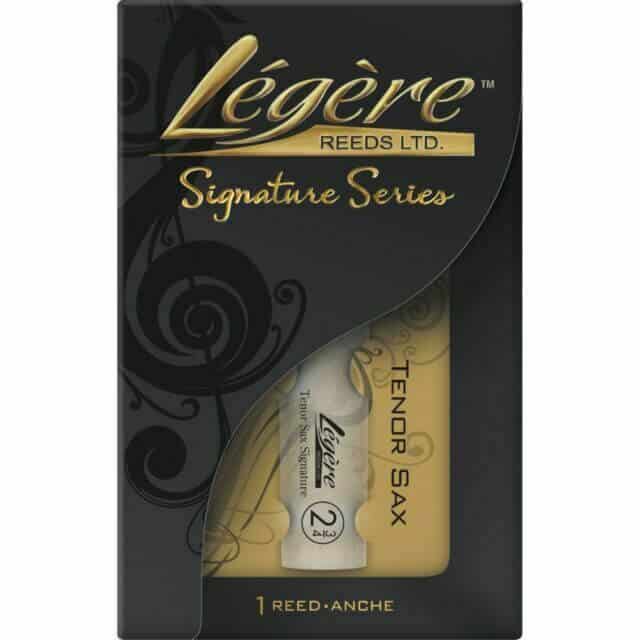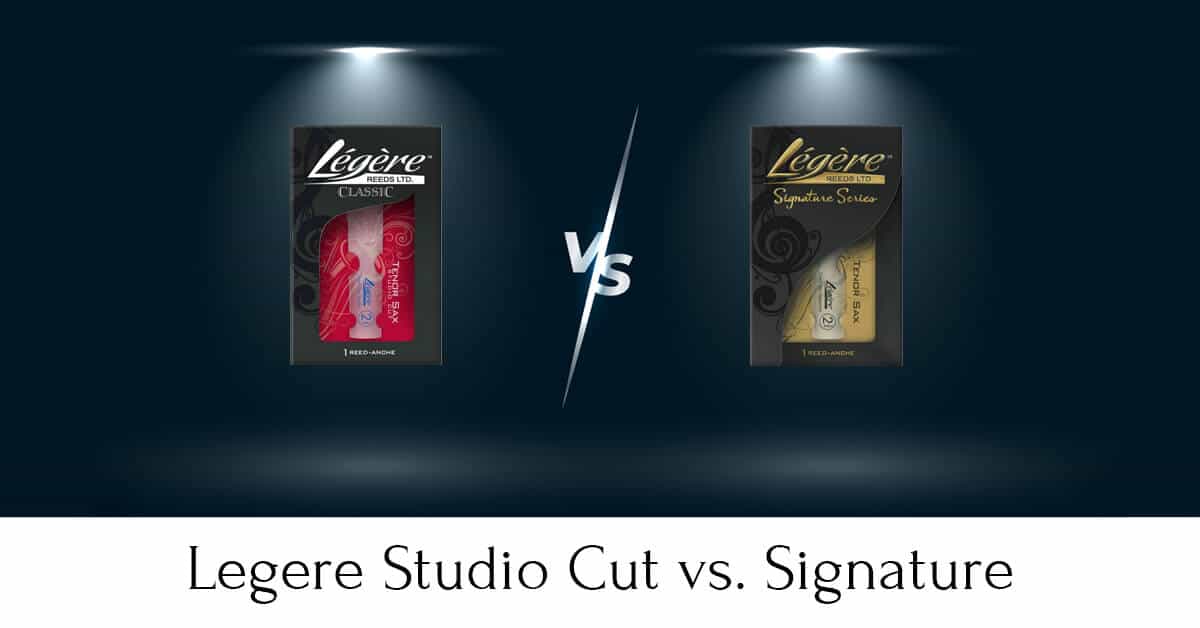The sound your saxophone produces is highly dependent on the sizes of open chambers of different parts of the instrument, but when it comes to the reed, it’s about how it vibrates against the mouthpiece.
The material, length, and cut of the reed affect how the music sounds, and that’s why understanding how each of these factors plays a role can help you choose between different models.
And in this article, I’ll delve into the differences and similarities between the Studio Cut vs Signature reeds by Legere.
Table of Contents
Legere Studio Cut vs. Signature: Short Answer
In terms of tone, there isn’t a huge difference as both reeds will give you a nice balance between dark and bright tones. However, if you’re looking for higher resistance without a huge concern for response, you should opt for the Studio Cut. Alternatively, if you’re looking for solid projection, flexibility, and response, you should opt for the Signature.
| Image | Product | Details | Price |
|---|---|---|---|
 |
Legere Studio Cut | Runner-Up | Check Price |
 |
Legere Signature | Best Overall | Check Price |
Full Comparison
Type of Saxophone
The Studio Cut reed models are available for both alto and tenor saxophones, while the Signature is more diverse as it’s available for the sopranino, soprano, alto, tenor, and baritone saxophones. As a matter of fact, the Signature and Studio Cut are two of the best alto saxophone reeds out there.
- Winner: Legere Signature.
Strengths
Whether you opt for the alto or tenor reed, the strengths available for the Studio Cut reeds start from 1.50 and increase in 0.5 increments up to 3.5. I.e: 1.50, 2, 2.5, 3, 3.5.
On the other hand, as is with the sizes, the strengths available for the Signature are much more diverse, and they go as follows:
- The sopranino starts at 2 and ends at 4, with 0.5 increments
- The soprano starts at 2 and ends at 4, with 0.25 increments
- The alto starts at 2 and ends at 4, with 0.25 increments
- The tenor starts at 2 and ends at 4, with 0.25 increments
- The baritone starts at 2 and ends at 3.5, with 0.25 increments
- Winner: Legere Signature.
Sound and Performance
The Studio Cut reeds use the same material as the Legere Classics ones, which resembles moist cane.
Generally speaking, the softness that the Studio Cut reeds have to offer is superior, and that’s why they have much more solid projection than their counterparts and are quite easy to play. However, their response isn’t as good as that of the Signature reeds, though they spare you the overtones, which is a huge benefit.
If your playing style includes a lot of vibrato or a lot of hard blowing into your sax, then the Studio Cut may be a good choice for you.
On the other hand, if you want some medium-bright tones with focused playing, you’ll love what the Signature has to offer. As a matter of fact, it’s the choice for both jazz and classical players of all experience levels, whether novices or pros.
If you’re looking for an unquestionable response without compromising on projection, you won’t find anything better than the Signature. This can be attributed to the fact that their build is a lot stiffer and thinner than the traditional cane. This smoothness makes the sound crisp and centered. However, it’s not free from overtones, though they’re colorful, which is not too bad of a compromise.
Conclusion
Generally speaking, there isn’t a huge difference in price -which is around ten bucks more for the Signature- or experience level for either reed, so you’re looking for an all-around option, which is why I’d recommend the Signature over the Studio Cut.
Plenty of saxophonists commend its performance, no matter the genre of music you’re planning to play. It balances between dark and bright tones, so you can play whatever register and pitch.
Moreover, both its projection and response are solid, while it’s flexible enough for beginners yet provides enough strength levels for more well-versed players.

